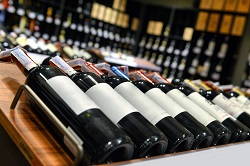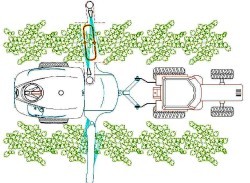New wine bottling techniques could boost the shelf-life of wine
From the Phoenicians to the Romans, winemaking may have been practiced for thousands of years across the globe, but the winemaking process is still evolving and undergoing refinement. Today, a group of winemaking experts in Italy are focussing on improving the bottling process, in a bid to reduce the amount of oxygen that can get mixed into the wine and quicken spoilage rates. EU-funded project RICAMO (Innovative oxygen-free wine bottling process) has invented a new wine bottling machine using a totally unique method of introducing the wine into the bottle. ‘A traditional bottling machine used across the industry can create a circulation of gas and liquid inside a wine bottle. This introduces oxygen and generates the need to add unhealthy sulphates to a wine to lengthen its shelf-life,’ explains Alberto Ruggin, RICAMO project coordinator. During current processes, a filler straw goes into the neck of the wine bottle and inserts an inert gas. The wine is then injected onto the wall of the bottle. During this process oxygen can get mixed into the wine, so many winemakers add extra sulphates to destroy the oxygen. The wine bottling machine developed by RICAMO goes right down inside the bottle. It then injects a bubble of inert gas – like nitrogen or carbon dioxide – into the centre of the bottle. Wine is added into this bubble and the filler straw rises up as the liquid fills the bottle without touching the wine that is already inside the bottle. ‘Our machine can introduce ten times less oxygen than existing machines on the market and improve the quality of the wine as well as its shelf life by about two to three years depending on the wine type,’ says Ruggin. RICAMO’s technology is particularly suited to more natural wines including organic and biodynamic wines which are becoming increasingly popular among more eco-conscious wine consumers. By eliminating more oxygen in the bottling process, fewer chemicals are needed to extend shelf life enabling more and more wines without chemical additives to reach the market. But it’s not just about shelf life. Ruggin claims RICAMO can improve the quality of the wine too. ‘We have tested wines produced under exactly the same conditions – same grapes, same soil, same fermenting processes – it’s only the bottling process that changes. Experts from across the wine industry have said that wine bottled using RICAMO technology tastes better – it has more freshness and an improved structure,’ he says. Although the project started just three years ago, RICAMO is hoping to start selling its machines to the wine sector by the end of 2017 or the beginning of 2018. Part of the EU-funding received by the project will go towards offering the company’s first six customers a discount price to help launch the new machine on the market. However, Ruggin does expect to meet some resistance to change from the more traditional Italian wine industry. Meanwhile, younger wine industries like those in the US and Australia have already shown an interest in the project’s new technology. RICAMO is also planning to target the beer industry, hoping to arouse the interest of microbreweries which could use the same bottling technique to improve the shelf life and quality of beer. And, in the future, it could look towards other industries including olive oil.







